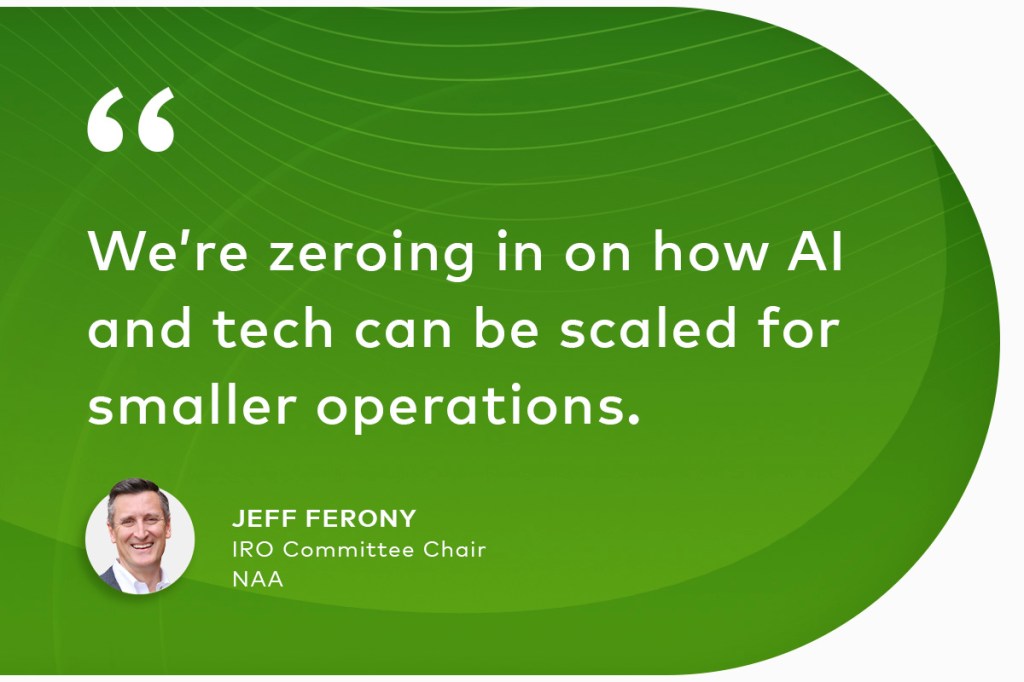
The independent rental owner (IRO) community is critically important to the property management industry. The number of doors managed by a single member of this group of rental housing providers varies from a handful to several hundred. In total, it is estimated that IROs manage upwards of 17 million rental units nationwide. Despite the role they play, they don’t always get the attention they deserve. That’s why we spoke to Jeff Ferony, current chair of the National Apartment Association (NAA) IRO Committee.
Jeff is also the president of Trio Properties, a 16-year-old property management firm based in Connecticut. As an independent rental owner himself, he understands the nuances of managing owned and fee-managed properties, both big and small.
In our conversation, we discussed common challenges faced by IROs as well as what NAA’s IRO Committee is doing to help.
Meet Jeff Ferony
Interviewer: Tell us a little about your background and current role as IRO Committee Chair.
I started in this industry about 30 years ago. I’ve done everything from leasing to general operations and ownership. That ground-up experience gives me a deep appreciation for what independent rental owners juggle every day. Some of the properties I own are smaller, so I feel like I can go on either side of the fence as an IRO. I understand how bigger organizations work and what smaller independent rental owners need as well.
As chair of the IRO Committee, I’m focused on making sure we’re creating meaningful support for IROs. That means providing practical tools, real advocacy and a strong network they can rely on.
Owned vs. fee-managed properties
Interviewer: What are the differences between operating owned and fee-managed properties?
Whether they’re owned or fee-managed, you should run them the same. However, the size of the community definitely makes a difference. Running a four-family property versus a 400-unit community is just a completely different operation. Independent rental owners don’t necessarily define themselves by size. If you own and manage your own product and are involved in the day-to-day, you’re an IRO. But how you operate does depend heavily on size, and that comes with different needs and resources.
What’s keeping IROs up at night?
Interviewer: What is keeping IROs up at night in 2025?
The top concern right now is cost. Insurance, utilities, payroll, interest rates — all of it is squeezing margins, especially for smaller IROs who feel those shifts more acutely.
Legislation and regulation are also major concerns. Something like rent control can hit IROs harder than larger operators. That’s always in the back of our minds.
And staffing remains a big challenge. That’s been ongoing for a couple of years now.
How the IRO Committee is helping
Interviewer: What matters most to IROs in 2025, and how is the committee approaching it?
It’s about support, resources and connections. The IRO Committee and NAA work to curate meaningful tools and learning opportunities. We’re here to make sure IROs aren’t going it alone. They have a place to share best practices and access real help.
We’re focused on highlighting creative solutions, such as centralizing leasing or using offshore help to stay lean. We’re zeroing in on how AI and tech can be scaled for smaller operations. It’s important for the tech to be approachable and affordable when talking about IROs.
Facing economic uncertainty
Interviewer: It seems we’ve been talking about economic uncertainty since the pandemic. What are you seeing on the ground?
It’s definitely unnerving. But IROs have always had to be creative. They’ve been centralizing and streamlining operations long before it became a buzzword. They pool resources, share staff and adopt technology to make things work. So, even with uncertainty, the playbook remains: adapt and pivot quickly.
Are IROs ready?
Interviewer: Are IROs prepared to weather economic uncertainty? What support can NAA and tech providers like Yardi offer?
IROs are built to adapt. They’ve always had grit and flexibility. But they still need tools, data and support. That’s where the IRO Committee and NAA can help. We provide resources, create learning spaces and make sure people can connect and share ideas.
Tech companies like Yardi play a huge role in helping IROs run leaner and smarter. Centralized platforms streamline marketing, leasing and payments, and they provide real-time data that would otherwise be impossible for smaller operators to gather. That efficiency means they can focus on what really matters: serving residents.
Centralization is key
Interviewer: How do specialization and centralization work together?
They go hand in hand. You want to find people who are great at what they do. Once that person is in place on your team, have them focus only on that. That’s true whether you’re a large company or a small one. It’s all about maximizing efficiency.
There’s a great example I saw where someone transitioned an office to offshore support. They ran their operation with just a handful of people, while accounting and some leasing tasks took place overseas. That kind of centralization and specialization can be incredibly powerful when done right.
What residents want
Interviewer: What do residents want from their property management teams?
Great customer service. Responsiveness is key. Even if you can’t fix something immediately, you can respond quickly, and technology really helps with that. Scheduling, communications and maintenance all get easier with the right tools.
People also want to feel connected to their community. That’s where IROs can really shine. Smaller communities can feel more personal and neighborly. Independent rental owners should use that to their advantage!
Residents are pushing for tech adoption too. They want to pay rent online and submit maintenance requests from their phone. That’s the baseline now, and even small landlords have to meet it.
AI skills matter
Interviewer: How is the education and implementation of AI skills coming along in the IRO space?
It’s moving fast, no doubt. IROs need to identify low-lift, high-value tools that make sense for their scale. Cost is always a factor.
Many technologies are just not cost-effective for a property management company with 11 units. Small businesses need software that’s scaled appropriately for their needs. When that happens, the tech makes sense. Our goal is to demystify what’s out there and steer IROs toward solutions that work for them.
Working on a budget
Interviewer: When budgets are strained, what tools and resources can be an IRO’s best friend?
Anything that helps with collections, streamlines maintenance and consolidates accounting. But peer knowledge is just as valuable. Some of the best insights come from talking to others who’ve been through it. That kind of networking is critical.
Biggest concerns of 2025
Interviewer: What are the biggest cost concerns so far in 2025, and how are they affecting IRO operations?
Insurance is at the top of the list. In some parts of the country, costs have doubled, tripled or even quadrupled. That level of increase makes it nearly impossible to make a real estate investment pencil out. Natural disasters are a big driver. Even in Connecticut, where we haven’t had a major event recently, we’re feeling the impact of higher rates.
We cover this in our webinar, A Conversation on Rental Housing Property Insurance. It focuses on insurance from an IRO perspective. We track astronomical increases, especially in places like Florida and the West. It all adds more operational uncertainty.
Expansion vs. stability
Interviewer: Are IROs still growing their portfolios, or is this a hunkering-down period?
Expansion is still happening. Property managers just need to be creative for it to happen, sometimes. There’s money out there, but the deals have to pencil out. In Connecticut, we’re seeing creative approaches, like layering in affordable housing programs or reusing commercial and industrial spaces. The key is to lower the basis — the cost of land or entry — so you can meet return requirements even when costs are high.
Disclaimer
We’d like to thank Jeff Ferony for his time and contributions to this article. We hope you enjoyed this post, which is for general information purposes only. The opinions, analysis and commentary expressed are not and cannot be relied on as legal advice, and do not necessarily reflect the views of Yardi Systems, Inc., Yardi Breeze or any of its affiliates.



